Anne-Fleur's NOMAD journey
Week 1
Maja Simisic
Day 4, Maja day 3
Yesterday I had a fever. I read up on what was done yesterday. I do feel like I have a lot to catch up on, but I will try to get as far as I can.
How do I start? No idea. I will talk to Maja about where to start. I will also look at Lela's HotGlue, she has a very clear description of how she worked yesterday.
In the morning I tracked the way I usually work. This translated into a methodology rather naturally. The link to this methodology is found at the top of this week 1 frame.
The afternoon was spent implementing my methodology to create a short performance.
For me, creating a methodology was very very helpful as I am not a structured person and this gives me something to hold on to when I get stuck in a process.
MY METHODOLOGY
Day 1
Week 2
Day 1
Lonneke
Freewrite
Wat is er wel?
Wat is er niet?
We staan in de ruimte
Pratend
Stil
Co-creërend
Elkaars woorden
In één ruimte
Een abstract poëzie spektakel
Trap er niet in
De aftrap is geweest
Day 2
Touch base:
Speaking up, take into account that some people need time to think. Yes, it's awkward sometimes but when you have something to say, say it. Be in the brave space!
Afternoon:
We registered our program for the ICAF festival. After that we started looking for our book travel companion. This book will come with us on the travel weeks. Also we started working on our glossary for NOMAD.
Week 3
Glossary
Day 3
In de ochtend hebben we een Zine gemaakt, hierin hebben we gewerkt met wat we op de eerste dag hebben gedaan.
Hierna zijn we in duo's uiteen gegaan, ik had helaas voedselvergiftiging dus ik ben naar huis gegaan. Wel is Coen beelden gaan filmen in de hele school en hier ben ik thuis tekst bij gaan schrijven.
Day 4
Vandaag zijn wij uiteen gegaan in duo's en hebben we de materialen van gisteren in een presentatie verwerkt. De video die hieruit is gekomen is hierboven te zien.
In het maken van de video en het schrijven van de tekst wilde ik graag de focus leggen op een bepaalde mate van abstractie. Ik wilde, zoals ik aan het begin van de week al aangaf graag met abstracte poëzie werken, liever niet regulier verhalend werken.
De video is uiteindelijk naar mijn mening echt een co-creatie geworden, de tekst is begonnen vanuit mij maar deze is uiteindelijk echt samen met Coen ontstaan. Ook het bewerken van de video is volledig in samenspraak gegaan, hier is niet één persoon verantwoordelijk voor geweest.
Day 1
The trains to Zwolle stopped going in the morning so David wasn't able to make it to Zwolle. Because of this we met online in the afternoon for the touch-base.
After this we got the assignment to read and summarize an academic test. As online class takes a lot of energy for me I had a lot of trouble trying to focus on the article. Because of this I got stuck in my executive dysfunction and didn't get past the first few pages. I think it would help me to have the text on paper rather than online, because then I can immediately mark important parts.
Day 2
We started with discussing the text and why some of us hadn't handed in our summaries.
After this we tried formulating our research questions and defining our research categories. I ended up with the following:
What is the social imaginary of people who live by/are influenced by the ocean?
- Social imaginary
- The ocean
- Posthumanism
- Non-human agents
Week 4
Day 3
This morning we started with an introduction to the terms participatory art, relational art, collaboration and socially engaged art.
This afternoon we had 45 minutes to create a concept of one of these types of art. Lela and I chose to create a relational art concept. You can read the concept and see the blueprint below this textbox. We chose this particular topic because we were both interested in creating a moment of true contact between strangers. For me this interest comes from a feeling that life is very fast and there are too few opportunities to have real contact with new people.

Day 1
During the touch-base we discussed our concept plans for the travel weeks, my plan can be found in a later entry to this page, which confirmed for me that my research question fits very well with what my fascination is.
After lunch we spent an hour updating our glossary (the link of which can be found at the top of this page) and then we had a lecture by David on critical pedagogy. I found this a very useful lecture to keep in mind as it reminds me to always question what I'm doing as an artisteducator and to have anyone learning from/with me also question this.
What also stuck with me was the way the lecture was given. David used cue cards with important words to the story on them and divided these cards among the attendants. As the lecture progressed we put the cards down in a spiral on the ground. This kept me very involved in the lecture and gave me the opportunity to refer back to what had been said earlier. Staying present during a lecture has always been and will always be very difficult for me. My ADHD just makes it very hard to regulate my focus. I found that this way of giving a lecture kept me present, because at any moment I could be asked to put a card down in the spiral and if I did miss a part of the lecture it was much easier for me to go back and understand where we were by looking back at what had been said before.
If I am ever in the position where I need to give a lecture, this is a method that I will try to implicate as it did really help me and hopefully can help others find lectures less daunting.
Feedback from Maja:
"Anne-Fleur was not present on the second day of the workshop but managed to keep up with the class on the last day. She interacts in an open-minded and curious way when being asked about opinions. Anne-Fleur's performance was poetic and vulnerable talking about her body."
Feedback from Lonneke:
"Anne-Fleur was enthusiastic and humoristic in her creative writing and she self-reflexively particpated in all exercises. She added enthusiasm and even though she got ill on day 2, she co-created with Coen on both the editing and writing, resulting in an abstract but emotion and rhythm provoking documentary with filmic tactics and spoken word. Allowing agency to the images of the building, new perspectives on it and those wandering within it. I believe that she is capable of making a poetic spectacle when she finds a form and idea her enthusiasm can fixate on - and I hope to witness it someday."
Relational Art: The Cube
Vertrokken vanuit: connectie tussen vreemden.
a) Vorm: Kubus/rechthoekige vorm. Vanaf buiten spiegelwanden. In de eerste kleine vragenruimte willen we gedimd warm licht. Het is de bedoeling dat het anoniem en veilig voelt. Je kan er niet naar buiten kijken of naar binnen. De binnenste ruimte staat een tafel met twee stoelen. Een grote kamer met woonkamer gevoel maar midden door de ruimte een scheidingslijn, beide kanten van de ruimte zijn volledig anders ingericht. Alsof je in twee verschillende ruimtes bent. Net zoals dat de mensen tegenover elkaar verschillend zijn. https://www.youtube.com/@Thorayaa/videos Een bron die gaat over vreemde aanspreken op straat.
b) De kubus staat op een druk plein. De kubus valt erg op van zichzelf dus zal nieuwsgierigheid opwekken bij voorbijgangers. Bij de ingangen van de deuren staat een kleine toelichting voor je naar binnen gaat. Verder zijn er geen kunstenaars zichtbaar aanwezig, deze zitten in de controle ruimte. We hebben geen specifieke doelgroep voor ons publiek dus iedereen is welkom.
c) Onze verwachting is dat mensen openhartig zijn omdat ze hun vragen in een gesloten en anonieme ruimte beantwoorden en vervolgens een onbekend iemand ontmoeten en daarover leren kennen. De verwachting is dat ofwel mensen zich in elkaar herkennen of juist niet. Dat mensen elkaar even zien en erkennen. De antwoorden worden gegeven zonder vooroordeel over wie er voor je zit.
d) Allereerst wordt de kubus geplaatst. Vervolgens is het afwachten tot de eerste mensen op de kubus afkomen. Ze beantwoorden vijf vragen in de eerste ruimte, deze worden ze voorgelezen door een ingesproken stem. Vervolgens mogen ze doorlopen naar de volgende ruimte. Hier gaan ze elk aan tafel zitten en kijken ze elkaar aan. Eerst worden ze welkom geheten door de stem die hun de vragen stelde. Ze worden geïnstrueerd elkaar aan te kijken. Vervolgens horen we opnieuw de vraag en om de beurt elkaars antwoord. Ze hebben als het ware een gesprek zonder op dat moment te spreken. Na alle antwoorden gehoord te hebben worden de deelnemers bedankt en verteld dat ze via hun eigen deur naar buiten mogen en als ze zichzelf willen voorstellen aan elkaar dat dit buiten kan. Vervolgens begint de performance opnieuw. Elke ronde worden er een verschillende set aan vijf vragen gesteld. Zo zouden mensen opnieuw de kubus in kunnen.
e) We moeten materiaal verzamelen en de constructie van de kubus moet gemaakt worden. Intercom en opname materiaal is nodig. Interieur ontworpen en verzameld. De vragen moeten opgesteld worden en opgenomen. We schatten in dat dit een maand ongeveer zal duren. De performance vindt plaats met mooi weer dus in een zomermaand. Zodat er veel mensen op straat zijn.
f) We willen camera’s hangen in de binnenste ruimte. Deze gaan echter pas aan als beide mensen, na het beantwoorden van de vragen in de eerste ruimte, toestemming geven dat het materiaal gebruikt mag worden in documentatie van dit project. Dit houdt in dat we het mogelijk online zetten.
Day 2
Today was our first day working with George and Andrea on Forum theatre. First we got a brief introduction into theatre of the oppressed, which left me a little confused as to what it was exactly but that didn't really matter, because as the day went on it became much clearer.
What I take with me from this day is the 'Learning by experience' methodology from David Kolb. This explained much to me about the way I prefer to learn. For me the more traditional (western) learning by reading does not work as well because it does not involve the body in learning. I have noticed in the 20 years that I've been in school that I need to do things, experience them in order to learn. Seeing a methodology explaining how to effectively do this gave me a very important tool.
We ended the day by creating a tableau vivant with the topic of patriarchy. We then made a frame before and a frame after. Then we got a short practical introduction to foruming a scene.
Week 5
ICAF
I am mad
I am so mad
I wanted to be here
I had a right to be her
I am so mad that
One human's presence
Or notion of possible presence
Can ruin an experience
And put me out of commission
He did this to me
I shouldn't be the one that can't go
Because of his presence
He did this to me
I should have the power to say I do not want you here
He should not have this much power
Over my mood
Over my mental health
Over my safety
I should have this power
I should have the power
I should not have to leave to feel safe
I should be able to make him leave so I feel safe
I am mad
So mad
So so mad
That I panic at the thought of him
At the thought of him not understanding that he did this to me
At the thought of him thinking we are still friends
At the thought of him approaching me
Expecting a hug
Expecting me to pretend everything is fine
Thinking he did nothing to me
While I shake like a leaf
I am angry
At the power this man holds over me
The power this man got
By harming me
By violating me
Structurally
This power should be mine
I am angry
That I can't do anything
But be angry
Week 6
Day 1
Today we started working with Frida from Fossil Free Culture. We started with a presentation on her work and what she aims to achieve with her work. Seeing this and seeing the change that this has brought was really inspiring to me. Sometimes it can feel like I can't really change anything with what I make but this was proof to me that this truly is possible.
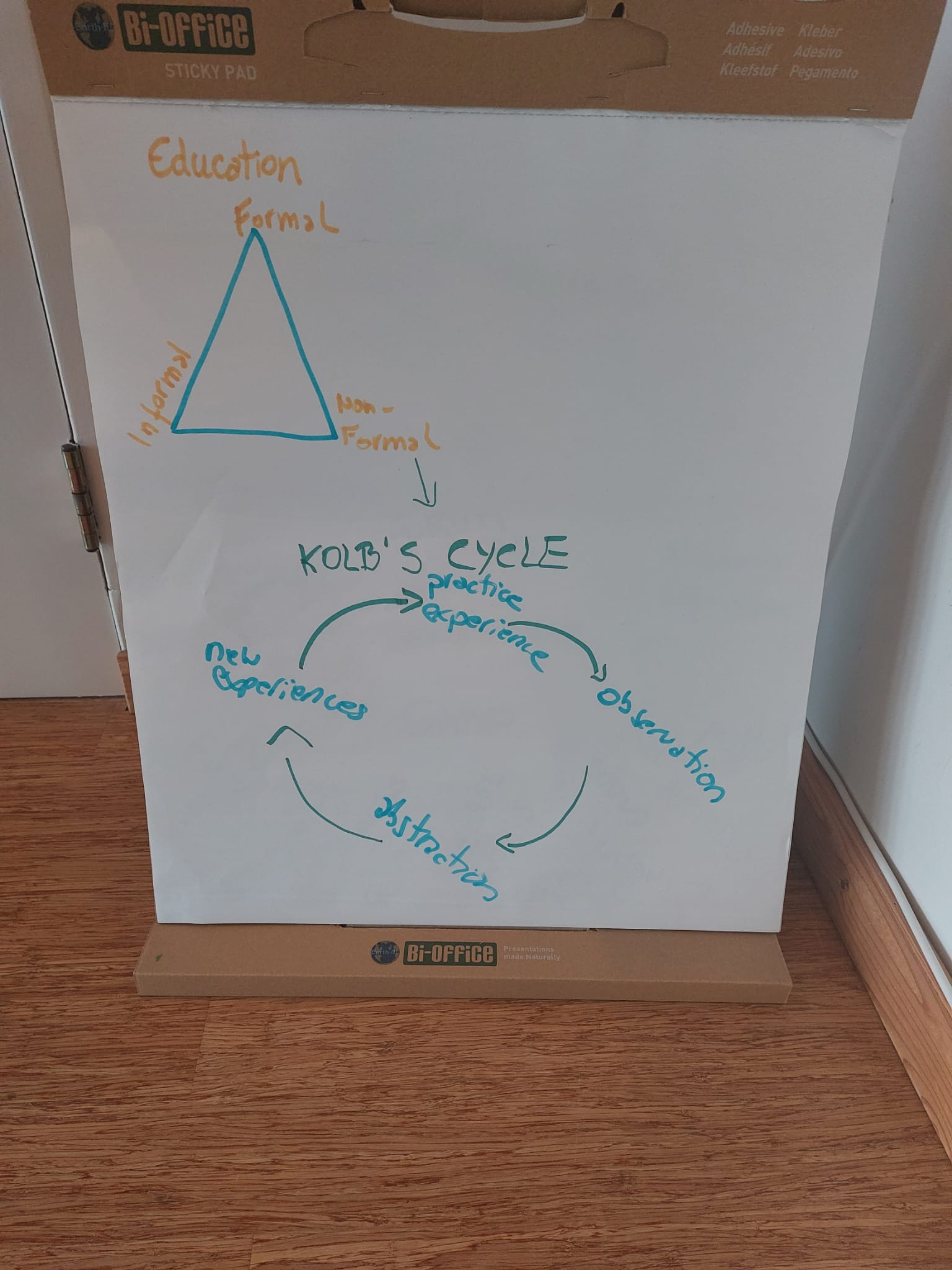
Day 3
Today we dived deeper into the practical application of forum theatre. This really helped me to digest the theoretical information from the day before. In two groups we made scenes with a theme that we wrote down the day before. I was with Coen and we chose the theme Patriarchy and focused on street intimidation as the theme itself was too large.
We performed the scene and then people stepped in to try to bring a solution for the problem demonstrated. Before we did this it wasn't very clear to me how forum theatre could lead to a conversation but while doing this we naturally rolled into one and this made it click for me.
After this we learned about the avocado of oppression, a tool used to map out where certain issues lie and how you can change them.
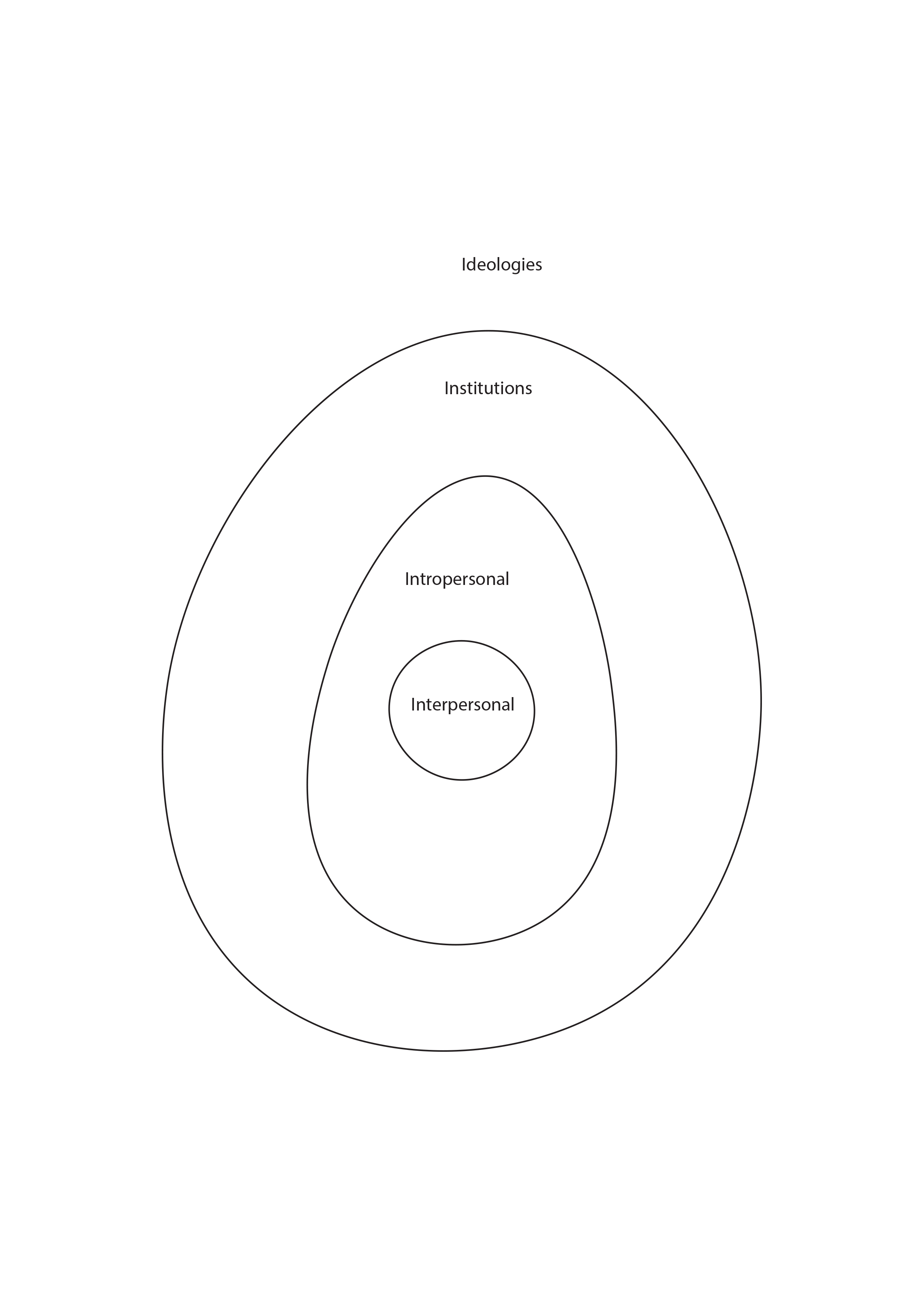
Day 4
Today we used the forum method on the scene made by the other group. Without realizing it, the conversation about this piece used the avocado of oppression which made the conversation very clear and gave us the chance to really choose what we needed to say and where this could affect change.
Towards the end of the day we did an exercise called the 'emotion machine' and we tried doing this with some of the themes we had written down. This proved difficult as most of these themes we serious social issues with harmful stereotypes associated with them. This did however result in a very interesting conversation on what you are allowed to depict and when you are able to do this without perpetuating these harmful stereotypes.
Day 2
We spent most of today brainstorming and making a plan for our activist performance tomorrow. You can see our (Lela, Len and I's) work below:
(Zoom in to read)
Day 3
Today we did our activist performances in the city center of Zwolle. The performance Lela, Len and I created was about improving queer education in schools. This is a topic I am very passionate about and personally attached to. Because of this I was very nervous about taking it to public space.
Being queer is not something that is always safe, and therefor I was quite scared of any negative reactions we could get. These would feel like personal attacks, because of my own being queer.
I am however very proud that we did go out and do it. On the right you can see a short impression of the performance and below that I have put the pamphlet that I put together for the performance.
Feedback from David:
“Anne-Fleur has been participative and engaging, always asking questions, and contributing with interesting insights to the whole group. Her communication skills are very good. In my sessions, she has worked on her research question, as well as the prototype about participatory/relational arts. She participated well in the session on Critical Pedagogy. Concerning ICAF, Anne-Fleur has been absent for all the working days, although her absence had an urgent motive.”
Feedback from George:
“Anne-Fleur was engaged in all the work we did. She wasn't afraid to try things out and was very vocal, contributing a lot in feedback and discussion. She was also willing to share a personal story which we went on to forum.”
Feedback from Frida:
“Anne-Fleur is an enthusiastic and engaged student. Very open for the exercises that were proposed and actively participating and contributing with original ideas and suggestions. She had a very calm and positive energy. But her perfectionism can at times prevent her to experiment a bit further.”
Week 7
Day 1 and 2
Today is the deadline to get our portfolio in order for our zoom-out conversation. I have been able to keep up with my documentation throughout Nomad which, for me, is quite an accomplishment that I am actually really proud of. This also means I am easily able to finish this before the deadline.
This week we are also preparing for our travel weeks. I have an idea of where I'm going, when I'm going and what I will be researching. This plan has to be more detailed though, and that is something I find very difficult. Planning is always difficult for me and this is no exception.
Despite this I was able to finish my presentation, which you can find here >
Travel weeks
Prototype week
Day 3 and 4
These two days we had our travel weeks presentations and our zoom-out conversations.
During my zoom-out conversation an interesting thing came up. In my document on how I see myself as an artisteducator I put researcher as the lowest level. During our conversation however Emiel said I did seem like a researcher. I think I am curious and like researching things, but I wouldn't call myself a researcher as I feel like I always sort of 'swim' in my research and don't really have a method. This I do think is an interesting topic of discussion that I would like to continue.
My travel weeks
I have been quite bad about updating here throughout.
To be honest I had a really tough time during my travel weeks. I went to Portugal on my own. Travelling on my own is not new to me, however I am no longer used to being on my own for extended periods of time. This made me extremely anxious while travelling. What also didn't help was that I went to a town that was pretty run-down and a hostel that was the same. It made me feel very unsafe, making it very difficult for me to find people to connect with, which did not make it easy to answer my research question.
Instead I decided to focus on the non-human natural environment. I tried listening to the environment and trying to write from there. Giving it a voice. The 'other' in my research became the non-human agents. This was an idea inspired by my travel book. I read the Posthuman Glossary, about posthumanism and non-human things having agency over their existence. This did help, though my anxiety didn't subside by any means, it did relieve the pressure I felt about talking to strangers.
When I got home I decided it would be best not to go on as planned, as this would mean more being by myself, which would not be good for me in the moment. So instead I focused on ways to connect with the water, paddleboarding, sailing, things like that.
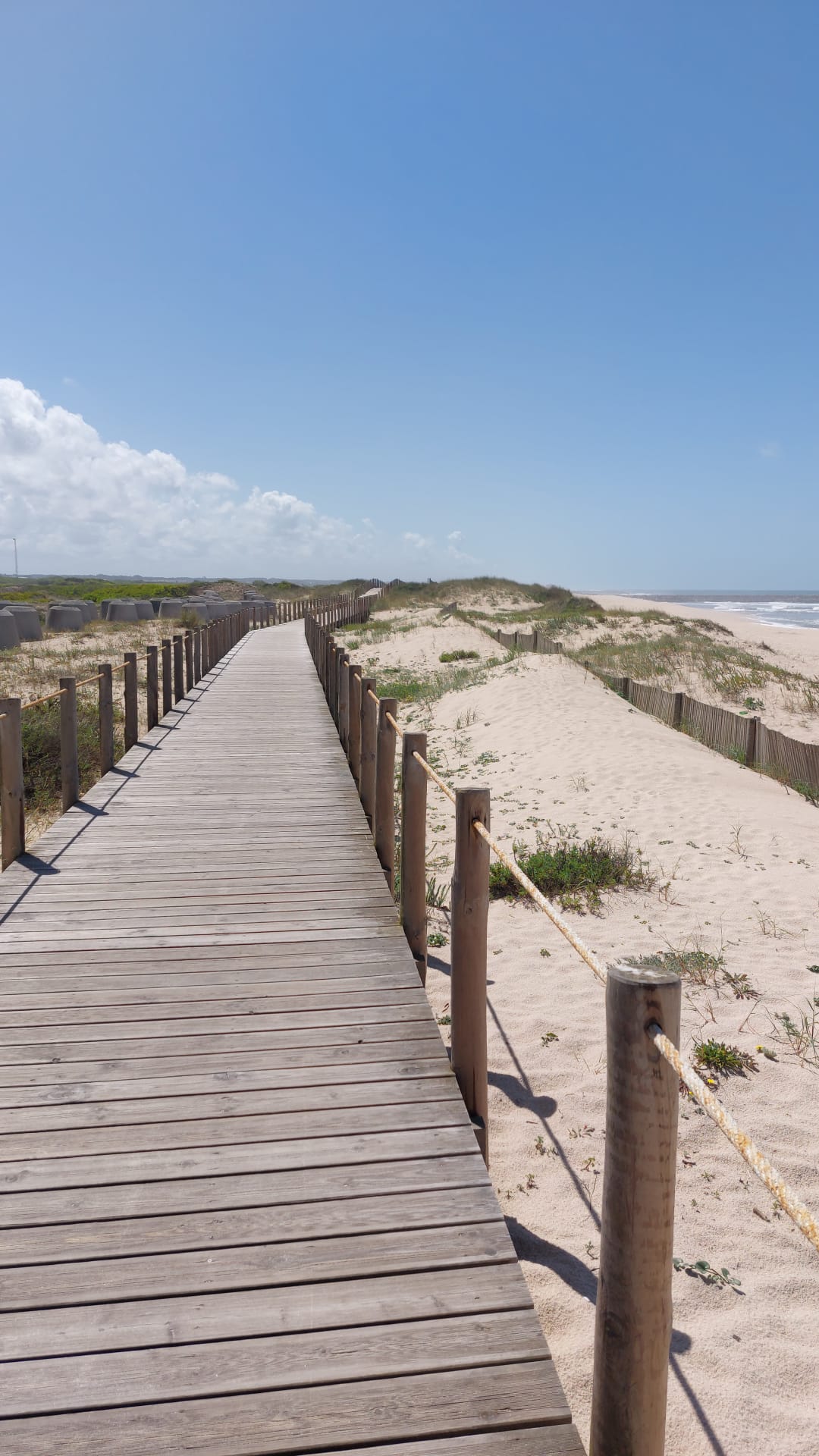
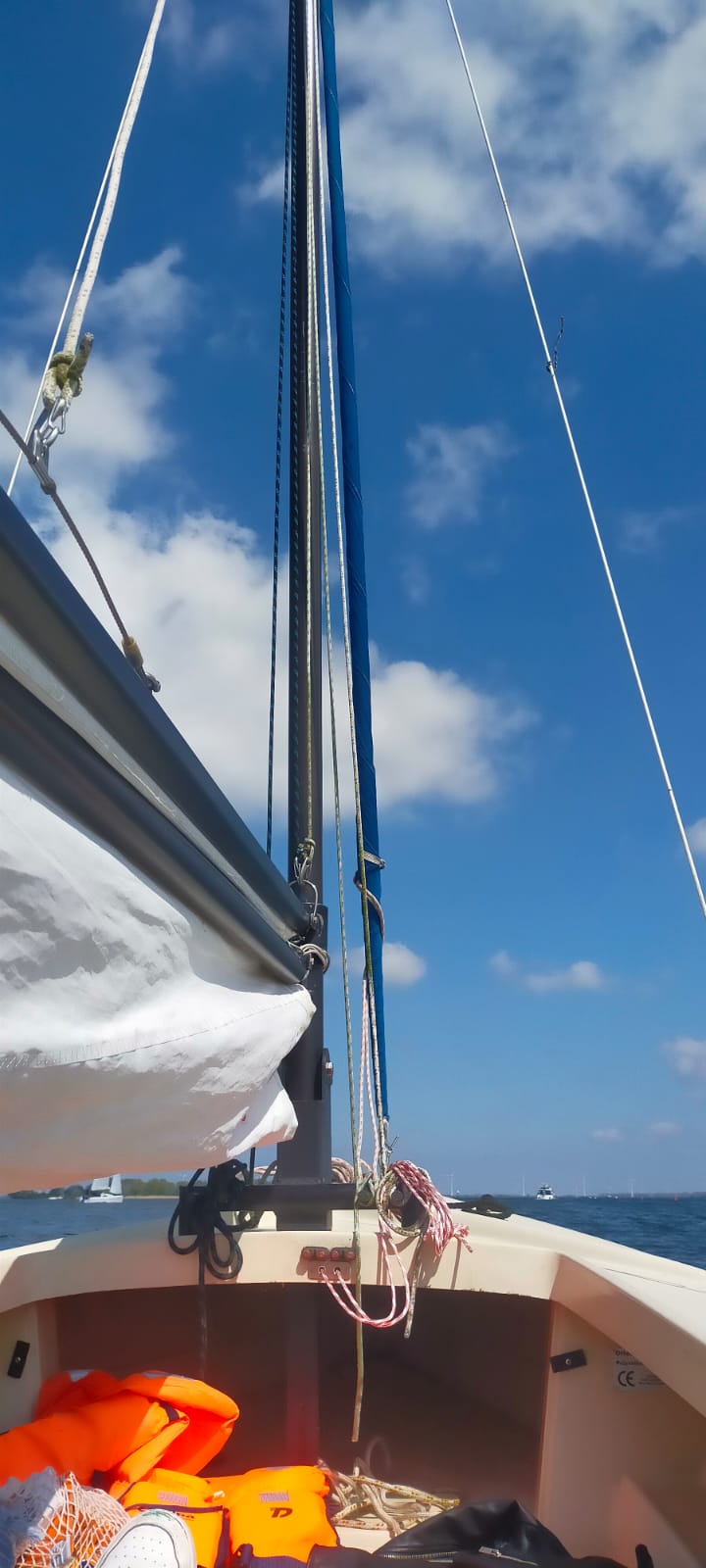
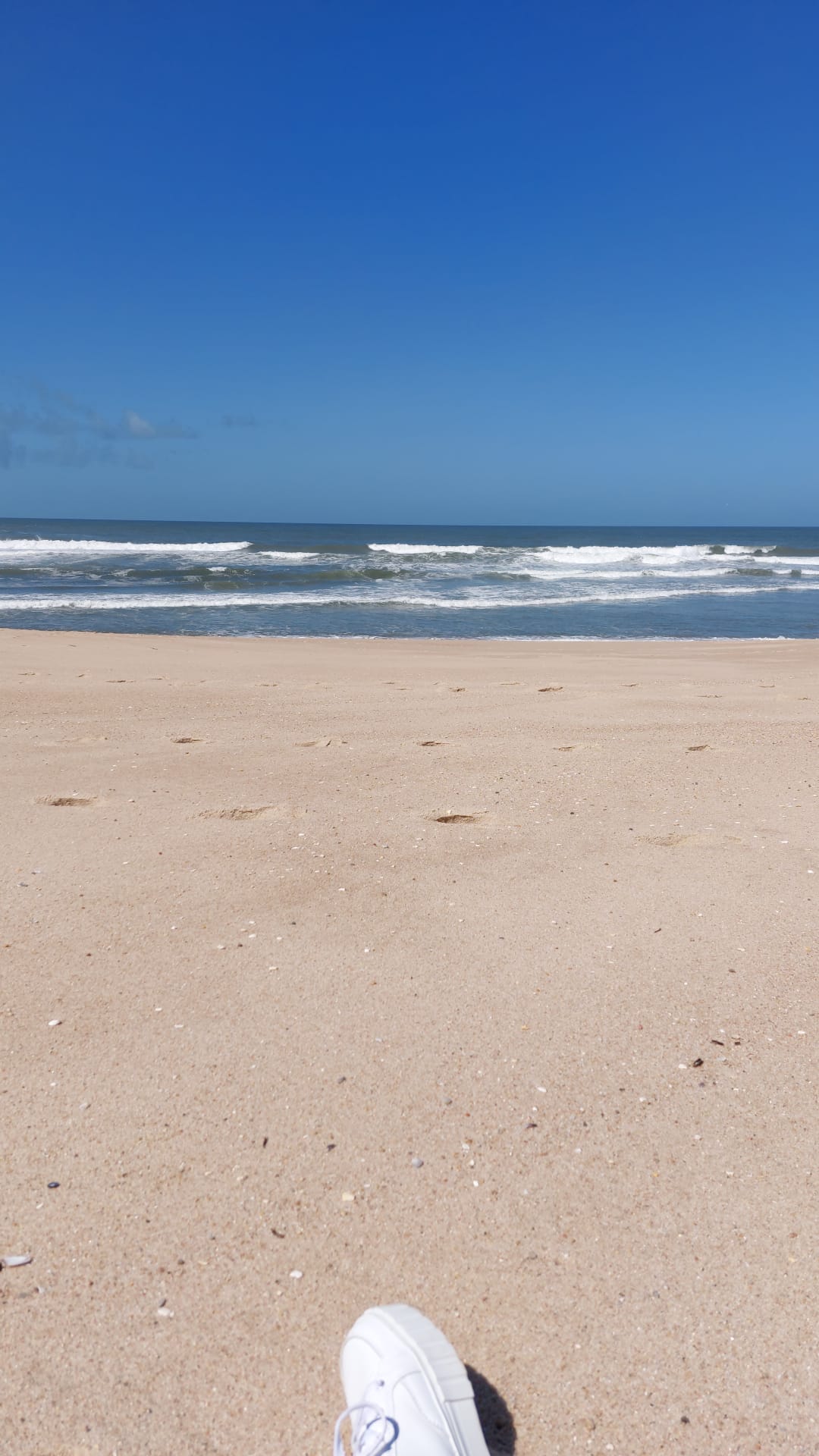
My prototype concept:
In this artistic prototype I want to show a connection between the body and the non-human natural environment, through this performance I want to invite the audience to be more mindful of their own connection to non-human nature. My audience will consist of students and teachers connected to this semester of Nomad. These people are aware of what we have been working with and what I have done in my travel weeks. Because of this I expect that they will feel invited to check their connection and to consciously make this connection more often. Of course, as this will take place in the public space there will most likely be unexpected audience as well as this desired audience. I do not expect the unexpected audience to react or take in the performance in the same way as the desired audience.
I am planning on putting my SUP-board in the canal near school and do a movement sequence, perhaps while reciting a spoken-word/poem that I wrote based on the connection between my body and the water. I have all the materials I need; the only risk is that the weather will not allow for me to do this, in that case I will try to use the movement qualities that water gives but perform on land.
I will have someone film this performance and have someone take pictures. I don’t want to ask the audience to think too much because it is about feeling a connection to the environment so I will not be asking them to write me feedback immediately after.
In practice:
I ended up not doing a movement sequence on the board, as this was too hard for my skill level. What I did do was have the audience listen to the audio above (click the image to listen) this text and have them walk along the water while I paddleboarded along the path.
Afterwords I got back that the experience I tried to give the audience worked, as long as the technical aspects worked, which sometimes glitched. This is something I'll be working on for the final presentation.
Another thing I will work on is making the 'other' a bigger part of my presentation. I don't really know how to do this, but I will talk with Sophia about this.
Lastly I need to look at my location as this time I wasn't always visible and there was a distance between me and the audience. I want to look at placing my audience along the water and having them dip their feet in so they are more connected with what's happening. I will also spar with Sophia about how else I could close the distance between me and the audience.
My final presentation:
For my final presentation I took the feedback and decided not to change the audio too much but completely change the imagery.
In this presentation I didn't use my SUP-board but stood in the water in a white dress, moving with the flow of the water. I embodied a kind of water deity who takes people's thoughts that they want to get rid of.
In the audio I asked the audience to write down thoughts they would like to let go of on sugar paper and had them bring the papers to me. I didn't read the thoughts they wrote down but instead immediately dissolved the paper in the water, symbolizing the thought itself being carried away by the water.
I chose to do this in order to give the audience a chance to develop a relationship with the water as a place to let go of the things they need to let go of.